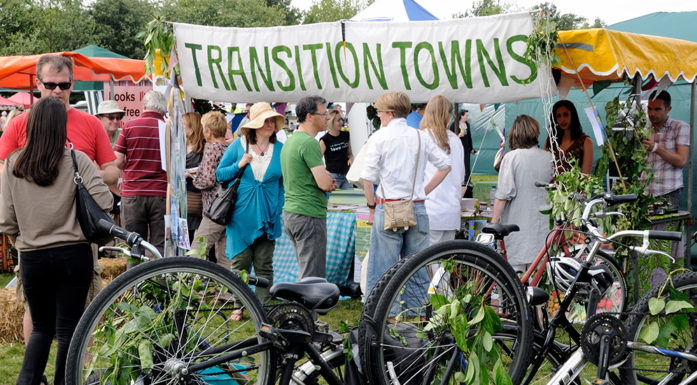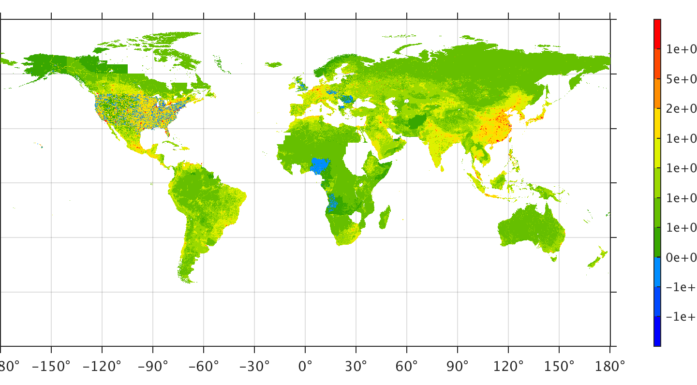Global supply chains as a way to curb carbon emissions
The coronavirus outbreak raised everyone’s awareness of the significance of global supply chains to modern economies. But global supply chains also play an important role in greenhouse gas emissions. How they are managed can either increase or decrease carbon emissions, new research shows.
The coronavirus outbreak has companies from Apple to Amazon warning consumers, shareholders and governments about how factory shutdowns in China and across the globe have disrupted global supply chains. Many goods, including cars, mobile phones and medicines, have parts or components that are imported and exported several times before they are finally made into the finished product.
Global supply chains have driven economic development over the past two decades and have contributed more than any development policy to lift one billion out of abject poverty.
But beyond their vulnerability to a global health crisis, it turns out that these complex global supply chains also have a hidden climate secret.

Edgar Hertwich is International Chair in Industrial Ecology at NTNU and professor at the Department of Energy and Process Engineering.Photo: Ned Alley, Scanpix/NTNU Info
When a piece of a product in a global supply chain moves across borders, it travels with the carbon emissions needed to make it. Not surprisingly, researchers call these emissions “carbon-in-transit.” A new publication shows that these travelling emissions account for a whopping 10 per cent of all global carbon emissions, and have tripled between 1995 and 2012.
“We have always been interested in the greenhouse gas emissions associated with what we consume, with little concern for the intricate ways in which the global economy provides us with the goods we consume,” said Edgar Hertwich, a professor at the Norwegian University of Science and Technology’s Industrial Ecology Programme. “It turns out that many countries participate in producing those goods.”
This matters as nations try to cut carbon emissions overall, whether by imposing carbon taxes in the countries where goods are produced or consumed, or by another measure called a border carbon adjustment, according to a paper that Hertwich recently published.
For example, Hertwich says, a carbon tax on imports would affect exports, because 10 per cent of global GHG emissions are exported more than once and enter complex global value chains. A border carbon adjustment could advance a further unravelling of global supply chains.
And that may not be a good thing, he says, because products that enter the global supply chain are more energy intensive than average products — but are, on average, produced with less emissions-intensive energy than other products.
“Global supply chains, overall, may contribute to reducing emissions associated with the production of individual products,” Hertwich said.
- You might also like: Buy less, be happier, and build a healthy planet
Choosing the right economic instruments
The European Union has made it clear that cutting carbon emissions are a top priority. On 4 March, EU Commission President Ursula von der Leyen announced that the commission had adopted a proposal for the first-ever European Climate Law, with the objective for the EU to be climate neutral by 2050.
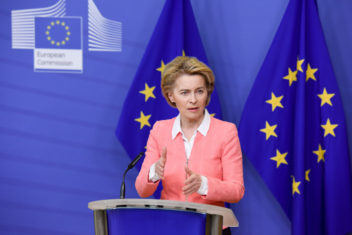
Ursula von der Leyen says that the EU should be climate neutral by 2050. Photo: European Commission/ Etienne Ansotte
“The science is very clear. Climate is part of the natural world that sustains us,” she said in a press briefing about the proposal. “And this natural world is severely endangered. It is high time to act and this Climate Law is part of the European contribution to this action.”
And earlier this year, at the Davos 2020 economic summit, von der Leyen warned China that it either needs to put a price on carbon emissions at home or face the possibility of a CO2 tax on imports.
“There is no point in only reducing greenhouse gas emissions at home, if we increase the import of CO2 from abroad,” von der Leyen told delegates at Davos, as reported by the Financial Times. “It is not only a climate issue; it is also an issue of fairness towards our businesses and our workers. We will protect them from unfair competition.”
But choosing the right way to force those cuts can be tricky, Hertwich said.
- You might also like: Well-meaning climate measures can make matters worse
Where should carbon emissions be counted — and taxed?
Like a dieter who wants to lose weight by tracking his daily calories, countries that want to cut their carbon emissions need to know the source of their emissions.
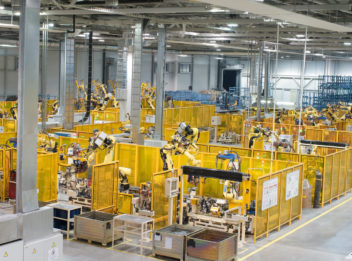
Yes, during the coronavirus pandemic, factories have been idled. But when factories start up again, it’s important to think about how to handle the carbon footprint of the goods we buy. Photo: Colourbox
The challenge comes with products that are made in one country, such as China, but then are purchased and used in another country, like Norway or the United States. If the carbon emissions from these products are going to be taxed, for example, where should the taxes be levied — on the producer country or the consumer country?
Carbon-in-transit complicates this question immensely.
For example, China, the US and South Korea export the highest amount of carbon that was previously embodied in imports — this is carbon-in-transit, Hertwich said.
“For China and the US, 20 per cent of the exported carbon was previously imported, while for Korea, that number is 40 per cent,” he said.
So if a country — or the EU — decides to impose border taxes on carbon, carbon-in-transit will also be taxed, he pointed out. Given the amount of carbon in transit, estimated to be five billion tons, and if the tax were to be set at US$ 30 per ton, taxes on the carbon-in-transit alone would amount to more than US$100 billion a year.
“This would surely become a cause for contention” for countries and businesses, he said. “If border tax adjustments do not include a tax refund for exports at the border, companies will argue against an import duty for products used for export production to ensure competitiveness on the global market. If they do, the question is how to assess the emissions associated with imported intermediates or document previously paid import duties.”
- You might also like: Helping EU cities and regions cut carbon emissions
Consumption tax has pitfalls, too
Another approach is to tax carbon emissions where the products themselves are consumed — so even though your mobile phone was made in China, you as the owner would pay the carbon tax on the emissions from its production.
From a pure economic standpoint, taxing carbon emissions at the consumer level is effective, Hertwich said, but there are still potential pitfalls in structuring such a tax.
“For a consumption tax, the challenge is how to assess the level of emissions which depends on the respective technologies of the many countries participating in complex global value chains,” Hertwich said.
Another approach is to look at how components in the global supply chain are produced, and tax their major inputs, Hertwich said. Technology exists, however, to track the origin of components.
For example, chemicals are the most involved in complex global value chains, followed by cars, machinery and ICT.
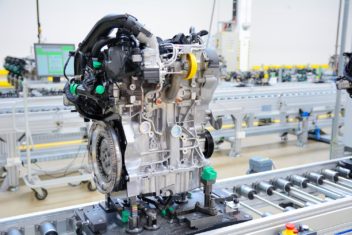
Cars and their parts are involved in some of the most complex global value chains in the world. Photo: Colourbox
The most emitting foreign inputs to the production of these products are crude petroleum, steel, chemicals and fabricated metal products. Companies can also be compelled to report the carbon intensity of these products.
“Taxing these inputs would do the most to clean up supply,” he said. “Global supply chains have driven economic development over the past two decades and have contributed more than any development policy to lift one billion out of abject poverty. Their benefit provides a rationale for countries to work together in implementing a global carbon price regime.”
Reference: Edgar Hertwich. Carbon fueling complex global value chains tripled in the period 1995–2012. Energy Economics. Volume 86, February 2020

